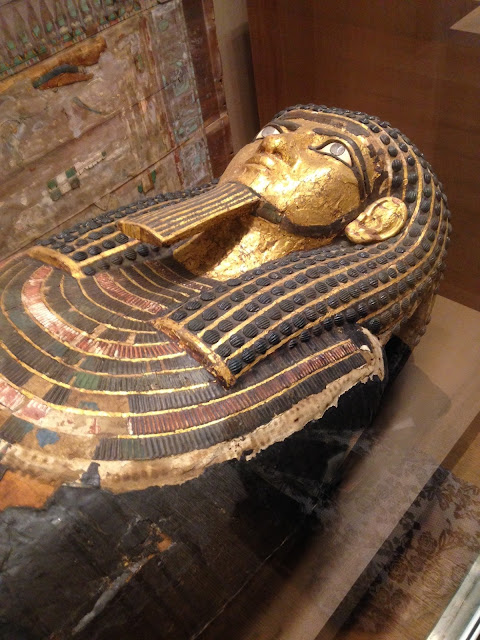Day 407 - Painting and social class
March 24, 2025
Gallery 630 contains a number of 18th century paintings of people, sometimes singly, sometimes in groups. The introductory signage notes that around 1650, scenes from everyday life became popular subjects for painters, in part because the Reformation reduced the demand for religious images. Also, I would assume that the rise of a wealthy mercantile class brought a new group of art consumers who wanted to see their own lives better reflected in artists' works. Some of the works have moralizing overtones, and some are sexually frank. One shows a procuress introducing a young woman to a gentleman sitting at his breakfast table. I see that Met caption-writers have now adopted the term "sex worker" to describe women who, in the past, would have been labeled "prostitutes."
I'm intrigued to see two detailed copper engraving plates used to make William Hogarth's prints; it's unfortunate that while small reproductions of the prints are shown, full-size versions are not available. "Gin Lane" illustrates the physical and moral dissipation caused by excessive gin-drinking. "Beer Street," on the other hand, shows the healthful qualities of drinking beer! That's quite a stretch for our imaginations today, but I suppose that, given the contamination of the London water supply, beer probably was the more healthful beverage.
Today's work is an Angelica Kauffmann portrait, measuring roughly 54 inches high and 46 inches wide, of a young aristocratic English family, Edward Smith Stanley, Twelfth Earl of Derby, his wife Elizabeth, Countess of Derby, and their son Edward Smith Stanley. Elizabeth, clad in a flowing blue dress and holding up her pudgy, nude child, strikes me as vaguely Madonna-like in her pose, although no Madonna I've ever seen wears a feathered headdress. Her young husband (he was 24 when the picture was painted in 1776) is dressed in a red jacket with a fancy lace collar and red britches; his outfit, according to the placard, imitates one seen in a Van Dyke work painted a century earlier. What I really like about the portrait are the two brown and white dogs (spaniels of some kind?) at Edward Sr.'s feet. Especially appealing is the one lying down, whose bright observant eyes gaze out at us.




Comments
Post a Comment